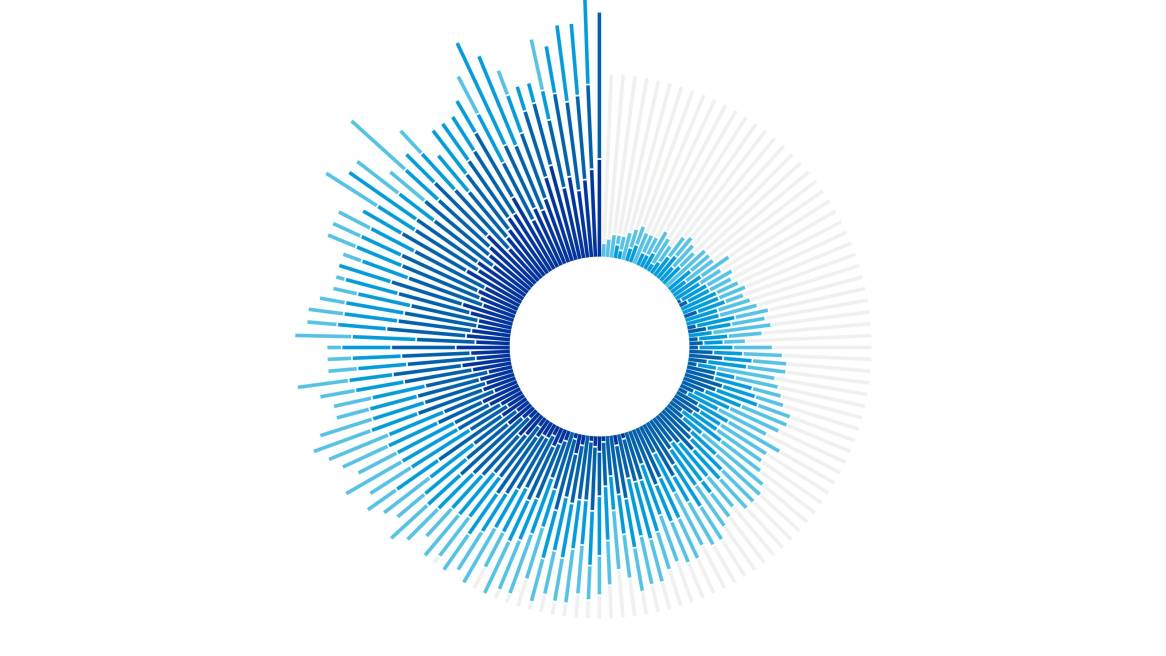Circular Economy: The ‘Invisible Now’
The future we are preparing for may be closer than we think. Circularity is a lens to inspire business model expansion and transformation.
By Angela Nahikian, Steelcase Director of Global Sustainability
Since the earliest flickers of the industrial revolution, business has been perfecting the linear economy model. At its extreme, this model is built on the idea there will be an infinite number of customers, wanting to own an infinite number of new, innovative objects — and there will be infinite resources to support this growth. In practice, we know it’s not that simple, nor is it true.
There are strong signals this ‘take, make, dispose and repeat’ model is under quiet attack. Industry growth rates are declining, material supply is constraining and substantial market shifts are taking place. More and more, organizations and consumers are choosing convenience, customization and performance over ownership and disposal.
A growing contingent of entrepreneurial start-ups and established, global companies, alike, are seeking to drive growth and innovate their value propositions through circular economic models.
What if we could deliver both the growth and the social and environmental good we’ve been seeking?
Early estimates developed by Ellen MacArthur Foundation and partner McKinsey & Company indicate adopting circular economy principles could generate a net economic benefit of 1.8 trillion euros for Europe by 2030 – doubling the benefits offered by the current linear model. Likewise, many companies and industries are predicting potential revenue benefits of circular economic models ranging from 2x to 6x.
But what is the Circular Economy, really? The Circular Economy (CE) is often described as restorative and regenerative by design – a way to decouple economic growth from resource consumption. CE business models are most often product-service hybrids where products are designed to optimize service offerings. Transportation services versus cars and paying for light as a service versus owning lighting systems are a couple of examples.
The role of products in these new business models changes. Instead of products being designed for disassembly to avoid the landfill, for instance, they might be designed for disassembly, reassembly and parts harvesting. Products become the engines of circular models. Their embedded attributes create recurring opportunities to generate value, revenue and good.
With so many compelling forces coming together, why hasn’t more progress been made?
It is not easy to translate sustainable, circular economy principles into scalable change models to drive consistent, innovative outcomes. It’s a complex systems design problem and often requires a significant amount of unlearning and acquiring new skills.
Steelcase, is a 105-year old organization. When people think of us, they often think of the furniture we design and make for workplace, education and healthcare environments. But really, we are in the people business. Our purpose is to unlock human promise through our research, work with customers as well as within and through our own organization.
In hindsight, we have been on the path to a more sustainable, circular economy for over 20+ years. In the early years, this manifested as optimization activities in operations and as circular product innovations. Now, we’re looking to circularity as a lens to inspire business model expansion and transformation. We have spent the last decade tinkering, piloting, succeeding and failing. We have launched circular business models such as:
- Steelcase Event Experiences, a part of our business that partners with companies in need of short-term, inspiring event or work spaces
- Eco-Services and Phase 2 end-of-use programs that help customers redeploy under-leveraged assets
- Smart + Connected Spaces – embedded technology in the workplace to help businesses understand space utilization and efficiency and make informed decisions about changes.
Even with these circular business model experiences, we still have a lot of learning to do. Navigating these exciting, but sometimes complex, opportunities provides daily learnings.
Highlighted below are some insights we’ve gained through our work so far. Not all will be applicable to all industries or circumstances, but they may serve as valuable provocations to chart more direct paths to circular business model development.
Recognize it’s a long-term commitment. The opportunities related to CE can be big and transformative. Pursuing a circular economy model, like any business opportunity, requires the humility and resilience to build the literacy, skills and systems to achieve success. Building fully operational CE models may take up to a decade or more to fully realize. Pursuing them at scale requires a long-view strategy and a long-term commitment.
Adopt an entrepreneurial mindset. Advancing CE business models is venture-like and requires an entrepreneurial mindset. In pursuit of internal investors, CE champions may find that the work of advancing the CE models does not fit neatly inside the company’s innovation structure or decision-making process. Forming strong partnerships with the innovation communities inside your company is important. As an entrepreneur, you must own the business case and the advancement of ideas – even when the path is not clear. Don’t be afraid to take risks. Pilot, iterate and pilot some more. Socialize the results and ask questions, a lot of questions.
Embrace the design problem. Designing for CE is perhaps the biggest of the ‘big D’ design problems we may see in our lifetime. Succeeding in building circular businesses and products requires systems-level design thinking. Challenge your existing design principles and assumptions. This improves the chances of discovering ways to address unmet future customer needs and opportunities to challenge the status quo.
Take stock to find treasure. We might assume building a new kind of business model would mean having to remake everything from the ground up. New skills and competencies will likely be required, but reframing the ones you already have can yield big rewards. Inventorying existing businesses and competencies through the lens of CE can identify gems of capability lacking scale and needing only moderate investment and resources.
Create a roadmap. It’s no secret the inertia of the existing business can be a barrier to new ideas. It helps to have a plan that works within the boundary of the company but, at the same time, pivots it toward circularity. Engaging a qualified external consultant to facilitate the planning process helps. They can assist in engaging a broad range of stakeholders, clarifying intent and identifying capability gaps to co-create a plan. With a roadmap in place, you are prepared to look for linkages with existing initiatives which already have momentum. Be open to changing course if it means accelerating the plan. Agility is an ally.
Adopt an innovator’s mindset. As with any new business venture, you’re not asking people for help, you’re seeking investors. Conduct pilots and look for ways to show early examples of success. When people see how a circular strategy can drive results, they are more likely to personally invest. Externally, search for cohorts, critics and like-minded companies. Learn from them. For Steelcase, the Ellen MacArthur Foundation has provided a great community where members can share best practices, find resources and imagine new partnerships to drive change.
Technology is a game changer. Today’s advancements in analytics capability and the unprecedented access to information makes the CE business models feasible. The insights gained through these emerging capabilities will help inform and advantage the new models and deepen their value propositions. How might technology help grow your business offerings and innovate yours?
And maybe the most important of all….
- Consider culture. Understand your company’s culture, what it values and how it nurtures or reacts to new ideas. Reflecting early and often on culture can improve success rate.
- Unlearn to learn. Make space for learning by unlearning. Understand what assumptions and barriers you need to overcome to be able to see the opportunities that exist.
- Value empathy. Understand deeply by asking questions and listening carefully. This will strengthen trust and cement an understanding of the change you are asking people to make. Taking the time to build empathy leads to stronger concepts, easier transitions for people and better outcomes.
The ‘Invisible Now.’
As the incumbent, the Industrial Economy can make the advancements in the Circular Economy seem invisible, fragile and far away. In fact, we’re in the middle of a grand experiment. All around us, companies new and old, large and small, are building new business models and value propositions in stark contrast to the ‘take it, make it, throw it away’ models.
These companies are innovating value chains, reimagining product designs and retooling processes. Their hope is these investments, fueled by the technology revolution, will transform their businesses – and their relationships to society. It’s happening now.
How might the lens of Circular Economy help you reimagine your business and how you might become a global force for growth and good?
 Angela Nahikian is the Director of Global Sustainability at Steelcase. She leads the development of sustainable business strategy and corporate competency development.
Angela Nahikian is the Director of Global Sustainability at Steelcase. She leads the development of sustainable business strategy and corporate competency development.


